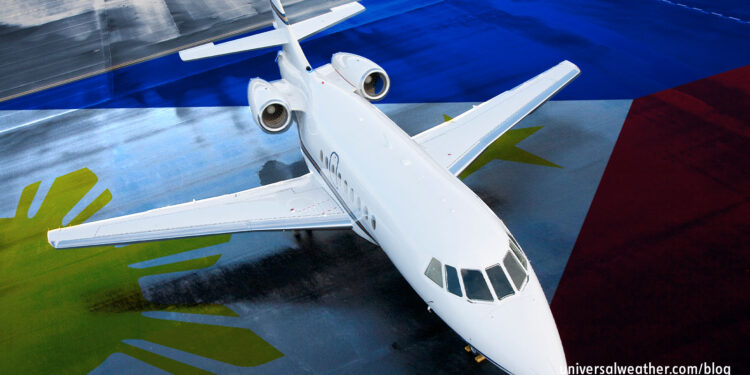Business Aircraft Ops in the Philippines – CIQ and Security

This business aviation blog post continues from our article last week, entitled “Business Aircraft Ops in the Philippines – Top Considerations.”
For most airports in the Philippines, other than at Manila (RPLL), business aircraft crew members and passengers will clear Customs, Immigration, and Quarantine (CIQ) in the main terminal. It’s important to have all required visas, as well as evidence of necessary vaccinations, when operating to the Philippines.
The following is an overview of what you need to know:
1. Consider CIQ requirements at RPLL
CIQ arrangements need to be scheduled/confirmed in advance of arrival. When you operate to RPLL, the aircraft will be directed to the customs clearing area. Once parked, crew members/passengers will be met by CIQ, and the planeside clearance process usually only takes a few minutes. Passengers may then proceed to waiting vehicles while crew pay CIQ fees in cash and proceed with the aircraft to the designated parking spot. For departure the ground handler will file a flight plan, approved by the captain, one hour before the estimated time of departure. Passengers board at the designated parking bay once the aircraft has been cleared and released by CIQ, police, and airport authorities.
2. Arrange all required visas
The Bureau of Immigration recommended that all required crew/passenger visas be obtained in advance (prior to arrival) for nationalities other than U.S. While it’s possible to arrange for crew/passenger visas on arrival, it requires a minimum one month to process all required documents. If visas on arrival are desired, it’s best that operators have their local business contact assist with issuance of visas.
Note that authorities require that passports have at least six months’ remaining validity.
3. Have plenty of gen decs available on arrival
Upon arrival in the Philippines, you’ll need to present five to six copies of the general declaration (up to 10 copies at some locations) as well as a health declaration for NIHI checks at the arrival security area. You’ll also need to present disembarkation/embarkation cards, signed by passengers and crew members. Your ground handler will assist in preparation of these cards and health declaration prior to your arrival/departure. It’s recommended that full passenger/crew information always be submitted to your ground handler at least 24 hours in advance.
4. Consider immunization requirements
Yellow fever vaccinations are required by the Bureau of Human Quarantine. All vaccinations should be done in your country of origin, and you’ll need at least 10 days’ incubation for yellow fever vaccinations. Ensure that crew/passengers have vaccination certificates onboard in case airport authorities request to see them. Malaria preventative treatment is also required for visits to the Philippines. While there’s currently no vaccine for malaria, you will have to take a once-a-day tablet two days prior to departure, while you are in a malaria area, and for seven days after you return. If you do not have proof of yellow fever and malaria vaccines/treatments, you may be quarantined or not permitted into the country.
5. Be aware of procedures for domestic operations
When pilots operate to airports outside RPLL and Clark (RPLC), air traffic control may require pilots to make a personal appearance together with their ground handler. Note that flight plans will not be accepted without pilot license numbers, expiration dates and current ratings, and signature of the pilot in command.
6. Always review the local security situation
Prior to any visit to the Philippines, it’s recommended that you check with your local embassy and/or security provider regarding high-risk areas. Obtain a security briefing for the area you’re traveling to as certain regions are not recommended due to local security risks. Security is reasonably good in the Manila area, but risks are elevated in outlying regions – particularly in Mindanao and the south. At most airports – including RPLL – it’s possible to arrange private security for your aircraft.
Conclusion
When operating to the Philippines, allow sufficient lead time to confirm visa requirements for crew/passengers, and allow ample time to obtain yellow fever vaccinations and preventative malaria treatments.
Questions?
If you have any questions about this article or would like assistance planning your next trip to the Philippines, contact me at davidbutler@univ-wea.com.



